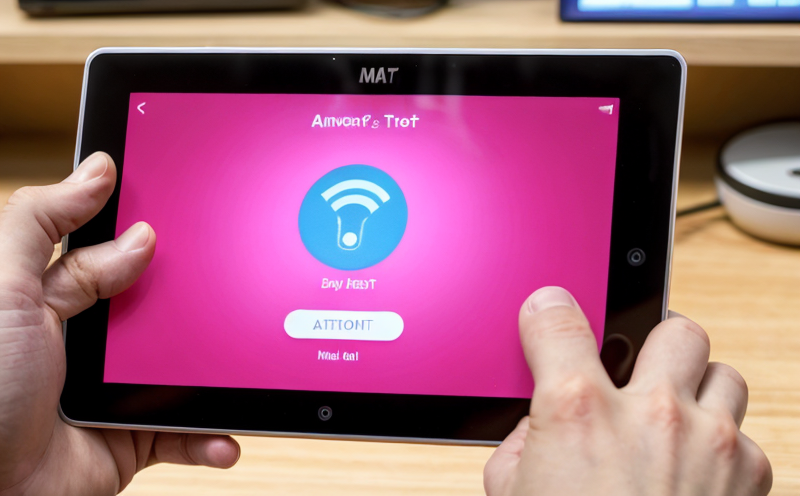LoRaWAN Connectivity Testing in Consumer IoT Devices
The Internet of Things (IoT) has transformed consumer products into smart devices that offer enhanced functionality and user convenience. LoRaWAN, a long-range low-power wide-area network standard, is at the heart of this evolution, enabling reliable connectivity for various consumer IoT applications.
LoRaWAN connectivity testing in consumer IoT devices ensures these systems meet stringent quality control standards. Testing focuses on several key areas: signal strength, data transmission accuracy, battery life optimization, and security measures. These tests are critical to ensure the reliability and safety of smart devices across different environments. For instance, a connected thermostat should maintain consistent communication with the central control system regardless of distance or interference.
Given the global nature of IoT deployments, robust testing is essential for compliance with international standards such as ISO/IEC 17025. This ensures that laboratories performing these tests are capable and reliable. The testing process involves multiple stages, including initial hardware setup, software configuration, and final performance verification.
One of the most significant challenges in IoT connectivity testing is ensuring compatibility across different regions due to variations in network infrastructure. Laboratories specializing in this field must stay updated with the latest technological advancements and regulatory changes. This includes understanding regional differences in LoRaWAN frequencies and data rates, which can significantly impact device performance.
The importance of LoRaWAN connectivity testing extends beyond mere functionality; it also plays a crucial role in enhancing user experience. For example, smart home devices should seamlessly integrate with existing systems without requiring constant reconfiguration or updates. By adhering to rigorous testing protocols, manufacturers can ensure their products meet these expectations.
Another critical aspect of this service is the use of advanced instrumentation and software tools designed specifically for IoT connectivity analysis. These tools provide detailed insights into signal quality metrics like Signal-to-Noise Ratio (SNR) and Bit Error Rate (BER). They also offer comprehensive monitoring capabilities, allowing real-time adjustments to optimize performance.
In summary, LoRaWAN connectivity testing in consumer IoT devices is not just about ensuring technical compliance but also about delivering a superior user experience. It requires expertise across various disciplines including electronics engineering, network security, and software development. By leveraging this knowledge, laboratories can provide reliable and accurate tests that contribute to the overall success of smart consumer products.
Benefits
The benefits of reliable LoRaWAN connectivity testing are numerous and far-reaching. Firstly, it ensures that devices function correctly across different environments, which is crucial for maintaining user trust and satisfaction. Secondly, by identifying potential issues early in the development process, manufacturers can save both time and money on rework or product recalls.
Another significant benefit is increased market entry speed. When products have already been tested against industry standards, they are more likely to gain approval quickly, allowing them to reach consumers sooner. This competitive advantage can be decisive in highly saturated markets where quick adoption by end-users is critical.
Moreover, reliable testing promotes innovation within the IoT space. With confidence in their product's performance and reliability, manufacturers feel freer to experiment with new features and functionalities without fear of failure or recall. This fosters a culture of continuous improvement that drives technological advancement.
In addition to these direct benefits for manufacturers, there are also indirect advantages for consumers and society at large. Reliable devices mean better healthcare outcomes through more accurate monitoring systems; safer homes thanks to smarter security solutions; reduced environmental impact due to optimized resource usage; and improved quality of life for all users.
Industry Applications
| Application Area | Description |
|---|---|
| Smarthomes | IoT devices like thermostats, lighting systems, and security cameras can be controlled remotely via LoRaWAN networks. These systems ensure energy efficiency while providing enhanced convenience. |
| Environmental Monitoring | LoRaWAN-equipped sensors monitor air quality, temperature changes, humidity levels in real-time, helping to protect public health and the environment. |
| Application Area | Description |
|---|---|
| Smart Agriculture | Sensors installed in fields track soil moisture levels, temperature variations, and plant health indicators. Farmers can optimize irrigation schedules, reduce water waste, and improve crop yields. |
| Healthcare Monitoring | Remote patient monitoring systems enable continuous tracking of vital signs, reducing hospital stays and improving treatment outcomes. |
The versatility of LoRaWAN connectivity testing makes it applicable across multiple sectors including agriculture, healthcare, home automation, logistics, and more. Its ability to operate over long distances with low power consumption makes it particularly suitable for remote or hard-to-reach locations.
International Acceptance and Recognition
The importance of LoRaWAN connectivity testing is underscored by its widespread adoption globally. Many countries have recognized the significance of this technology and have implemented regulations mandating compliance with relevant standards such as ISO/IEC 17025.
In Europe, EN 30.220 defines the technical requirements for radio equipment operating in the LoRaWAN frequency bands. Similarly, North America follows FCC Part 15 rules which outline the permissible levels of electromagnetic interference from devices using these frequencies.
Across Asia-Pacific region, local standards like those issued by China's Ministry of Industry and Information Technology (MIIT) emphasize the importance of interoperability between devices operating on LoRaWAN networks. These initiatives reflect a growing consensus among nations about the need for consistent quality assurance practices in IoT technology.
The international acceptance of LoRaWAN connectivity testing reflects its role as an enabler of global connectivity and seamless integration across diverse industries. As more regions adopt similar regulatory frameworks, it becomes increasingly important to adhere to these standards during product development and certification processes.





